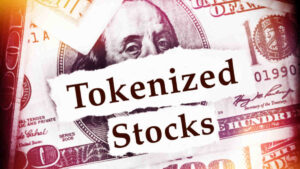Tokenising commercial real estate on Ethereum could be the next big thing

Getty Images
Real estate companies are showing more interest in tokenising commercial properties so they can become tradeable assets on the Ethereum blockchain, according to the executive of a Hong Kong-based company that serves as a custodian of traditional and digital assets.
“Right now, tokenization is a major, major emerging trend,” Gunnar Jaerv, the chief operating officer of First Digital Trust, told Stockhead.
“The challenge has been that there hasn’t really been the secondary markets and the infrastructure hasn’t been there yet, but now you have platforms like InvestaX in Singapore and a couple in Hong Kong.”
DLA Piper, the global law firm, also announced its tokenisation platform on Hedera Hashgraph in November and says Toko has tokenised $504 million in real estate, fine art, intellectual property and other assets.
“So now the infrastructure is getting there, and there’s also secondary markets emerging where can people trade these asset backed tokens,” Jaerv said.
“So we’re sort of very bullish on that.”
In order for an asset to be tokenised, it needs to be transferred to an independent custodian or trustee, which is where First Digital Trust comes in.
It’s a similar process to how individuals sometimes transfer their wealth into a trust, so they can pass their house and money on while avoiding probate and estate taxes, Jaerv explains. After their death, beneficial ownership of the trust might change to their spouse or children, while legal ownership would remain with the custodian.
“My sort of vision for the future is, that trust would be represented with a token and these things can happen on a blockchain and these transfer mechanisms would actually become more streamline,” Jaerv said.
For example, a company might buy 15 units out of a 200-unit real estate tower and create non-fungible tokens for them, he said.
“Each of these units could be represented by one token, and then you could essentially transfer the beneficial ownership of that token between different parties — so it makes it very easy to transfer these assets, flip them around a couple of times without actually having to change title deeds and all that.”
The title would remain with the trustee, with the token that’s changing hands representing the beneficial ownership, Jaerv said.
There’s a couple of commercial projects in the works in Hong Kong that First Digital is serving as trustee on, Jaerv said.
The company has also served as custodian for fine art, which is being tokenised for the novelty value. “When you tokenise an artwork, you can sell this story behind it,” he said.
It’s still very early days, Jaerv said. “It’s not mainstream yet, but we see enquiries coming into our mailbox and requests, they tend to be more on the commercial real estate side right now.”
Tokenisation in Australia
Matthew Harcourt, an analyst with crypto investment fund Apollo Capital in Melbourne, said he hadn’t heard of any projects in Australia tokenising assets yet, but it was an interesting thing to explore.
“If you have a tokenised property asset, then you’ll be able to get a lines of credit off that asset far more easily than if you went to be bank, because you’ve got collateral as a token that has a genuine right to that asset,” Harcourt said.
Getting a loan off a tokenised asset might be a permissionless process, he said.
Ethereum being used
The platform being used for most of these tokenisation projects is Ethereum, rather than any of its next-generation competitors, Jaerv said.
“People say it’s a public blockchain and you know, it’s not safe and secure and all of that, but at the end of the day, it’s been around for so long, it’s actually working.
“It’s not perfect, but you know, it’s working. You also have developers that know how to write smart contracts, and you have companies that can audit smart contracts. And other people have done it before so there’s some sort of knowledge base already there, as to how to do it.”
Other newer blockchains might be technically superior, but it’ll be difficult finding engineers to write code, auditors to look at it, and secondary markets where the asset-backed tokens can be traded, Jaerv said.
“So that’s the challenge, there’s a lot of good blockchains out there, a lot of good concepts for blockchains where tokenisation can happen probably even better than Ethereum, but that adoption is not there yet, the community is not there yet for these blockchains.
“That’s why most of them go back to Ethereum — it’s tried and tested, it works. It’s not perfect, but at least you can put something out there.”
Related Topics
UNLOCK INSIGHTS
Discover the untold stories of emerging ASX stocks.
Daily news and expert analysis, it's free to subscribe.
By proceeding, you confirm you understand that we handle personal information in accordance with our Privacy Policy.








